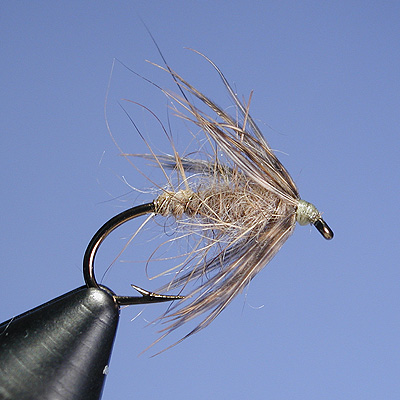
On The Fly
October 2012
"Fly tying is a school from which we never graduate"
TYING NEWS
The Southern Oregon Fly Tyers invite you to attend their meetings the second Tuesday of
each month. The next meeting is October 9, 2012. The meetings start at 6:00 PM, at the Madrone Hill
Mobile Home Park community building near Gold Hill. Bring a friend, come early so you don't miss
anything, and stay late. Tyers need not be experienced, and those with all levels of skill are
welcome. Each meeting a member is encouraged to demonstrate a new or different skill, from simple
to difficult. For more information, call Dan Kellogg at 773-4724.
DIRECTIONS: Take Gold Hill Exit #40, off of I-5 and go west, toward Jacksonville, 1.3 miles, until you
reach the brick entrance way to the Madrone Hill Mobile Home Park on the right. You’ll pass a golf course
parking lot on your left shortly after leaving the freeway. After you turn right into the
mobile home park, proceed to the community building which is located about 100 yards ahead on the left. The
address is 8401 Old Stage Rd. Please park your vehicle on the bare dirt in the parking lot to avoid the
wooden septic covers in the grass
 PATTERN OF THE MONTH –Leisenring Spider
PATTERN OF THE MONTH –Leisenring Spider
Hook: Daiichi 1550, Standard wet, size 12-16.
Thread: 8-0 Yellow.
Ribbing: Fine gold wire.
Body: Hare's mask.
Hackle: Natural brown partridge.
Tying Instructions:
Step 1: Mash the barb and mount the hook in the vise.
Step 2: Start the thread just behind the eye and lay down a thread base reward to the point just above the
hook barb
Step 3: Form a dubbing loop on the hook shank above the barb and advance the working thread forward to the
front of the shank. Select a small amount of hare's mask dubbing form it into a noodle and insert it
evenly between the two threads. Twist the loop with the dubbing captured between the threads until fairly
tight. Grab the end of the loop with your hackle pliers and wind the dubbing loop forward in touching turns
to within 1/8" of the hook eye. Tie off and trim the excess.
Step 4 Select a brown partridge feather with barbs long enough to reach the bend of the hook. Prepare the
feather and tie on by the tip at the front of the body. Wind the feather forward two turns, tie off and
trim excess.
Step 5: Form a neat tapered thread head, whip finish and cement.
This month's pattern, The Leisenring Spider, is part of my favorite category of flies,
the soft hackles, spiders and flymphs. They are also referred to by many as wingless wets. I first became
intrigued with them after receiving the classic little book, The Art of Tying The Wet-Fly and Fishing The
Flymph by James E. Leisenring and Vernon S. Hidy. The book was given to me as a gift from my friend and
tying mentor, Dick Bonamarte. It was a natural step to then acquire the more contemporary books of
Sylvester Nemes and Dave Hughes. Now I am proud to have joined the ranks of the soft hackle fly addicts.
Even though I teach and tie many other patterns, I rely upon the wingless wets
as my flies of choice. I recognize that more and more fly fishermen are coming around to the same
conclusion. The nice thing about these flies is that they can and do represent many different insect forms
like caddis as adults, larva, and pupa, mayfly nymphs, emergers, and adults. I also rely on this fly form
to help me imitate aquatic insects I could not find an adequate likeness for in my fly box. Many of my
Steelhead flies are tied in the soft hackle style incorporating soft feathers from different birds dyed in
the bright neon colors. The soft hackle encourages movement which I believe is the key factor to their
success.
Tying Tips
Color variations are possible on both the body and hackle. Dyed hare's mask and
partridge feathers are available. You can also vary the stiffness of the hackle for current speed and
water conditions. Two elements are important, sparse hackle and a buggy looking body. A couple turns of
hackle are sufficient and don't trim the long guard hairs off the dubbed body. You can tie this pattern
on any number of hook styles and sizes, dries, curved, light and heavy. You will find this fly to be quite
easy to tie, using very common inexpensive materials. If you would like to tie and try other wingless wets,
go online and search for Soft Hackles, Flymphs, or North Country Spiders for amazing information and tying
ideas. So tie some up, give them a test flight and let me know how you do.
Tie One On,
Dan Kellogg
(you can contact me at FLYGUY@EZNORTHWEST.COM)
www.tyerstoolshop.com